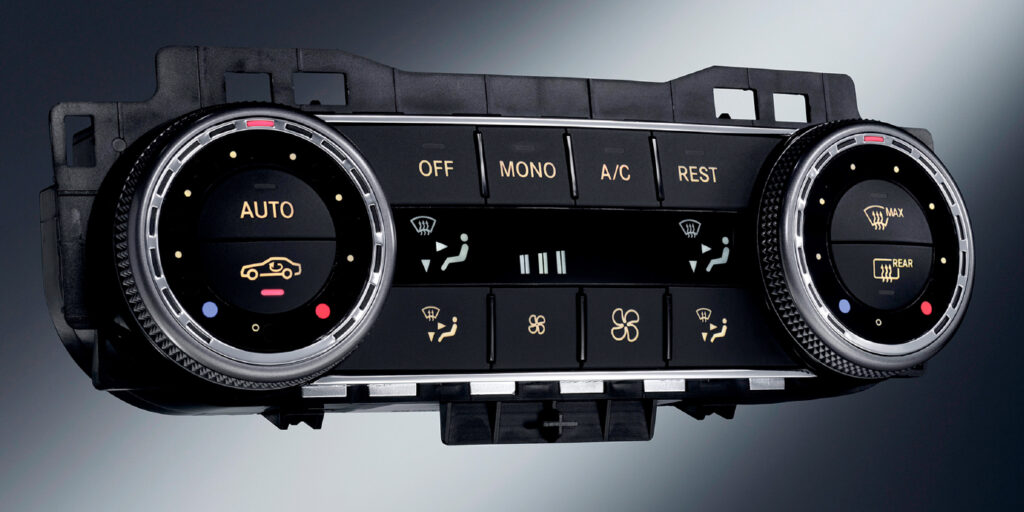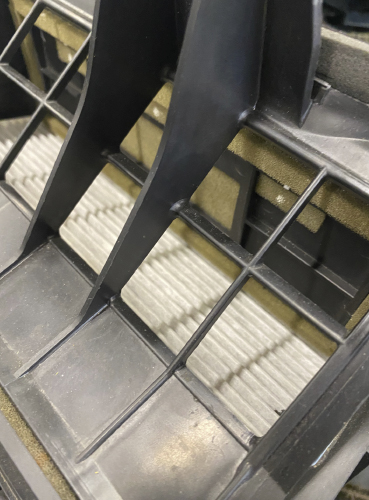Wintertime heater operation presents numerous questions and problems. Here are some guidelines for professional technicians to ensure the heating efficiency of customers’ vehicles when the weather turns cold.
- Verify coolant level and condition. If the system is low, the heater core is the first to lose coolant flow, causing a lack of heat in the passenger compartment. Old coolant can cause corrosion and scale buildup that can restrict coolant passages and reduce flow to or through the heater core.
- Check the temperature of the engine coolant to see if it has reached normal operating temperature. If the engine thermostat is opening prematurely, the engine temperature may not be sufficient to heat the vehicle cabin. A scan tool can read the coolant temperature sensor, or for older vehicles, a digital pyrometer can be used for this test. Check the temperature of the thermostat housing to determine the approximate opening temperature of the thermostat. Remember, normal operating temperature will be 20° F to 25° F higher than the temperature stamped on the thermostat.
- The heater core should be checked for proper coolant flow. Simply touch both of the heater hoses at the firewall to see if they are hot to the touch. If one hose is hot and the other hose is cool to the touch, then the coolant supply to the heater core is insufficient to heat the cabin. The problem could be a closed heater control valve, a defective water pump, air in the system, coolant system restriction or a clogged heater core.
- If both heater hoses feel equally hot, then the most likely problem is the temperature blend door not allowing air to pass over the heater core. Follow the manufacturer’s procedure to test and adjust the blend door. Another problem that could occur is a bypassing heater core. Some core designs have a separator plate in the tank between the two pipe fittings. The separator plate can erode away, allowing coolant to flow from the inlet pipe to the outlet pipe without passing through the core.
- If an air pocket develops in the heater core, coolant will not circulate through the core. Check the manufacturer’s recommended air bleeding procedure. Technicians may also be able to bleed the air from the system by using a cooling system pressure tester to lightly pressurize the cooling system. Loosen one of the clamps and hose at the heater core, but do not remove the hose. Lightly pressurize the coolant system, allowing the trapped air to leave the system via the loosened hose. When coolant starts to leak from the heater core fitting, re-tighten the clamp.
- At times the heater core may have a buildup of sediment, which interferes with its ability to be a heat exchange unit. Flush the core and re-test.
- Remember, an 85° F to 100° F increase from ambient temperature is the normal operating range of the heater. If the ambient temperature is zero degrees, then the expected duct temperature should be about 90° F.
- Clogged cabin air filters can restrict defroster performance, making it harder to see out the windshield. If a cabin air filter is clogged, it will create a restriction that will decrease the amount of hot air the blower can deliver to the windshield, which diminishes visibility and adds time that it takes to defrost the window. Following months of battling heavy pollen, dust, leaves, bugs and other debris, winter is the perfect time to give a customer’s cabin air filter a fresh start. This debris piles up, restricting airflow through the filter and causing heating/cooling problems.
- If the doors inside the HVAC unit are not working properly, it can prevent warm air from coming out of the selected vents. In some cases, the hot air may come out of only the lower vents or just the defroster. On most HVAC systems, the doors are powered by electric motors. The position of the doors is often monitored by a position sensor. If the motors are not able to actuate the doors, the air might not make it to the heater core. The tool of choice to diagnose these problems is a scan tool. Using your scan tool, you can check for codes, as well as observe the position of the doors. Some scan tools can calibrate the position of the doors which can be helpful if the battery or module was replaced.
- On some vehicles with diesel or high-efficiency engines, the driver might experience a loss of heat while idling. This is because these types of engines generate small amounts of excess heat. While idling, the fan and moving air will pull all of heat from the heater core. If the driver taps the gas, the heat may return. With these complaints, first check the condition of the coolant and heater core. Second, check the operation of the auxiliary coolant pump. These pumps keep warm coolant circulation when engine speeds are low.
















